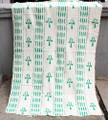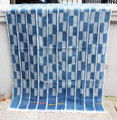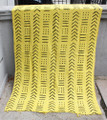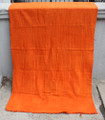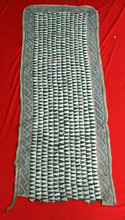 Loading... Please wait...
Loading... Please wait...- Home
- African Textiles & Scarves
- Bark Cloth
Product Description
Barkcloth is made from the inner bark or bast of a small number of trees. The Natal fig is the most common tree used for barkcloth-making in eastern Africa, as are trees of the Antiaris genus in west Africa. The best Natal fig trees are grown about 150 kilometres south-west of Kampala, close to the Tanzanian border. A strip about an inch wide and 16 inches long is cut, beaten with a wooden mallet until it becomes much wider and three times as long. Patches may appear which are carefully sewn with raffia thread, using pieces of cloth taken from the edge. The dried cloth is decorated using wooden stamps dipped in muddy water mixed with the bark from the kaboga tree. The dried cloth also provides a good surface for decorating, using brushes, stencils and patterns transferred from design boards. The main uses of barkcloth in Africa include everyday and ceremonial clothing, for bedding, as room decoration and as shroud material. The major production centers are Uganda and the upper Congo Basin. It was also produced in parts of West Africa; including Ivory Coast, Ghana, south east Nigeria and Cameroon. Barkcloth is also used in souvenirs, but survives as costume, particularly worn by people encouraging the persistence of traditions.
Please click photo for enlargement!
Sold
Dimensions: 67 inches long x 2 5 1/2 inches wide.
Any QUESTIONS please leave a message here at Contact Us!



